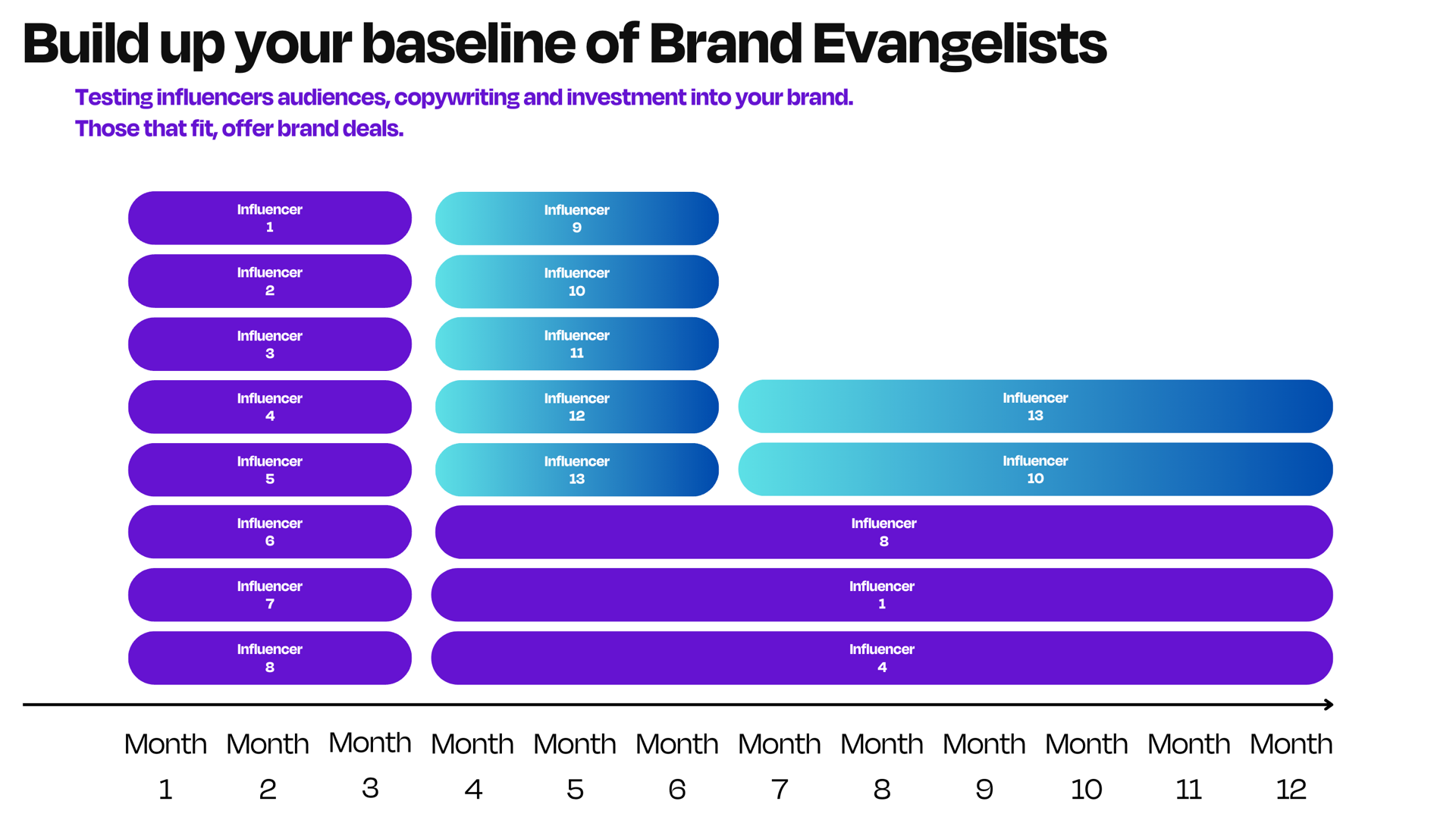Business Influencer Marketing x Nearbound GTM Strategy: Part 2.
Mark Pearcy • 0204-05-09
As a marketer deploying business influencer marketing tactics, you need to find the creator who can answer those questions for you. Yes, you can find your buyers, that's the easy part, but who do they trust.
Business Influencer Marketing x Nearbound GTM Strategy: Part 2.
Your customer costs are spiraling because your marketing doesn't match the human behaviour seen in the market today.
Symptomatically in typical inbound tactics (paid etc), you are experiencing three-figure £/$ costs for downloads, five figure £/$ costs to win one deal, and these average costs are increasing.
When it comes to organic search, it's no walk in the park either.
Google reigns supreme on the initial page of every pertinent keyword and even offers AI-generated answers from Bard. While this benefits users, it poses a challenge for publishers and content creators who heavily rely on SEO, particularly when compared to social media.
In 2021, esteemed SEO entrepreneur Rand Fishkin conducted research that unveiled a staggering fact: 65% of all Google searches conclude without a single click, an increase from 50% in 2019.
Behaviour is changing. Your prospects don’t search, they ask. They don’t click, they ask again.
The questions they are asking “Who can I ask that has already done this successfully?” or “Who is like me that’s done this before?”
As a marketer deploying business influencer marketing tactics, you need to find the creator who can answer those questions for you. Yes, you can find your buyers, that's the easy part, but who do they trust.
There's a subtle difference with business influencer marketing & partner marketing. With the latter, you'll discover prospects already that have an existing commercial relationship with your partner (that's the main goal and software like Reveal can help you do that).
Their prospect is way further along their pipeline than you'd like them to be in yours. Your partner has been to the promised land you seek, with that "shared" prospect.
With business influencer marketing, there's a much smaller chance of that overlap, however there's a wider reach based on their followers, a bigger profile and possible "wow" factor. Up until the moment your new influencer gets in front of your prospect, the prospect may not have been following them or given them a second thought.
There's many shared advantages across both tactics.
- Extended Reach and Audience Expansion
- Enhanced Credibility and Trust
- Cost-Effectiveness
- Content Diversification
- Leveraging Expertise:
- Scalability
- Speed to Market
- Feedback and Insights
One shared advantage is the ability to apply Nearbound marketing. Marketing with people who already have relationships and operate in the same spaces as your target audience.
When you apply it, depends on if you underlay your GTM motion with nearbound marketing or overlay onto your existing activities. You can see here we are not advocating for a complete demolition of your inbound tactics. Business influencer marketing, along with partner/customer/employee advocacy can get those 3 or 5 figure CAC costs down to a sensible usable workable profitable level!
There's a five step framework you can use created by Isaac Morehouse (CMO of Reveal & and a couple of them, the first two, will be familiar. Done well, this approach creates a reliable growth engine powered by networks of trust and influence.
1/ Defining Your ICP (Ideal Customer Profile)
We'd imagine you accounts and buyer profiles and personas are already set. This stage is bolting on a sense/ideal persona of "who" surrounds your top/existing customers that already have the highest levels of adoption, LTV etc plus are also a good technographic and psychographic fit.
There's even more clarity in asking the right questions to your customers and letting the conversations dictate the marketing message.
eg:
- Who in the industry do you look to for advice, or as an example of success?
- What service providers, communities, or tech do you turn to in order to make calls you need to make?
- What do you read or listen to every day/week?
- You are well on your way to establishing "Who does my ideal customer trust"
2 / Establishing a Strategic Narrative
There's plenty of frameworks for this (April Dunford, Red Thread, Andy Raskin), it's the source that will count the most.
Let real discussions with, customers, existing/desired partners plus evangelists inform your narrative and shape your messaging. Connecting with influencers who you feel have been to the promised land or at the very least relate to their challenges, help your prospects get there e.g. have used your product, would use it if they were in another role or just know yours well
3 / Assembling a Nearbound Marketing Team
Now it gets exciting and different. Marketing with influencers as opposed to throwing marketing stuff at them and expecting them to market to your customers. For that you'll need a team (external in this case, internally this is employee advocacy) and a business influencer marketplace/platform (Flooencer?).
Your creators' job is to spread the story in a way that can also mobilise the internal champion at your target account to mobilise change. Creators and influencers frequently possess a greater willingness than capacity to collaborate with you. Enhancing your ability to grasp their perspective and provide them with practical concepts, language, and content will yield superior results.
To help find a story to be spread, you can leverage journalists. Partners will connect your story, and customers validate. This is why ideally, business influencer marketing shouldn't be done in isolation.
The goal of nearbound marketing is to weave together best practices from partner marketing, influencer engagement, and customer advocacy
4 / Activating Your Evangelists
This part is our bag @ Flooencer. An evangelist is not a title but rather any sort of external influencer to a potential buyer who shares your vision of the promised land.
In an ideal world, you need a platform that allows you to drill down and filter influencers based on industry, location, follower count, your budget and more importantly, potential fit and sustainable proven content engagement. If it's possible map these evangelists to how they are situated around their buyer.
Next, evaluate positioning and narrative alignment. Do you share a similar point of view on market trends and the “promised land”? The best approach to nearbound marketing in this context is to provide them with valuable content that aligns with their previous successful posts. Take 3-5 of their top posts and draft messages that complement their style and voice.
Next, assess the positioning and narrative coherence. Do you have a comparable perspective on market trends and the "desired outcome"? In this scenario, the most effective strategy for nearbound marketing is to offer them valuable content that aligns with their previously successful articles. Select 3-5 of their top articles and create messages that complement their tone and voice. accounts. Leverage tangential and complementary strengths to create new capabilities, messages, reach, and influence.
Once you’ve identified your top evangelists through careful evaluation, it’s time to activate them. But first, clearly outline expectations and incentives.
Once expectations are aligned, kick off a cadence of co-creation. This is so important and consideration and demonstrates the possible length of your relationship with them. Weekly, monthly, and quarterly evaluations, and you might see the biggest growth by adopting activation plays that span a regular cadence with the evangelist.
Overall, this is the best bit and it resonates with us so much here at Flooencer:
The primary objective should be to establish the prominence/"fame" of your partners initially. By presenting them in a positive manner as the experts in their respective fields, you are offering them a valuable resource that they will be eager to share with their audience - who could potentially become your customers.
5/ Iterating and Scaling
"Where's the ROI?" your colleagues will ask.
By monitoring form fills ("Where id you hear about us", or using the likes lof Gong to listen in to your sales calls you are looking for influencer attachment.
The more traditional metrics found in GA or Linkedin Campaign manager cannot and for some reason choose not to - impressions, reach, follower count changes are still useful.
To fully embrace nearbound, it is beneficial to go beyond quantifiable metrics and incorporate qualitative measures. While it may be tempting to focus solely on measurable data when it comes to attribution, expanding our perspective by layering qualitative insights can provide a more comprehensive understanding.
Monitor your accounts to see how many have influencers attached, plus look to see if those have been accelerated.
So, this is what Marketing has to plan and execute for the best Nearbound x Business Influencer combo. We've yet to cover how marketing can enable sales, plus it's not all done to Marketing right? Sales, customer success.....step up!
See More Posts
Cardy
Copyright © 2021 Govest, Inc. All rights reserved.

